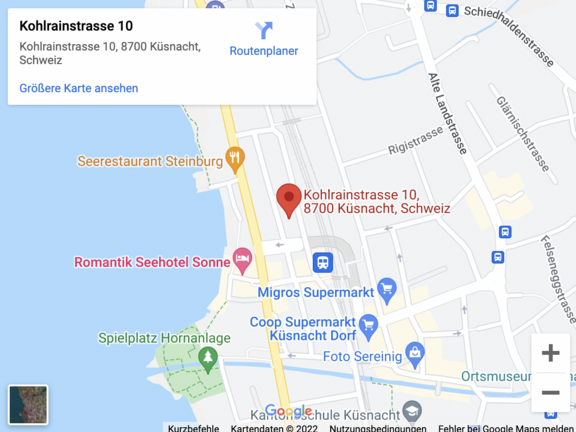Cesarean section
Caesarean section is a routine operation and usually takes 25 to 40 minutes. Except in extreme emergency situations, partial anesthesia (peridural or spinal) is preferred. The expectant mother is therefore awake, while the father often sits at the head of the operating table. Once the baby is born, it is checked by the pediatrician and brought to the parents while the doctors close the surgical wound. In this way, we try to create a similar harmonious birth experience to that of a "normal" birth.
ELECTIVE CESAREAN SECTION - CESAREAN SECTION "ON DEMAND"
In Switzerland, since the end of the 1990s, people have been talking about a woman's freedom of choice regarding birth or cesarean section, which has sometimes led to emotional discussions. Why has planned cesarean section become established as a practically equivalent alternative to natural birth?
- For the child, planned cesarean section is safest (0.8% total deaths around birth and as a newborn, compared with 1.5% for planned natural birth - C. Signore, Clin. Perinatol. 2008). In the nuclear family with 1.3 children per woman, risk considerations are becoming increasingly important.
- For the mother, the mortality rate for planned cesarean section is now as low as 1/60,000 as for natural childbirth. An emergency cesarean section, however, has a ten times higher mortality rate, which is why a cesarean section is better from the outset in terms of risk if the initial situation for a natural birth is unfavorable (e.g. immature cervix or overweight with a body mass index over 30).
- Patients' rights are given much greater weight. It is no longer the doctor alone who knows what is good for his patients. There is an equal dialogue between the pregnant woman, who is responsible for her own value system, and the doctor as an expert for diagnosis and treatment. A request for a Caesarean section may no longer be rejected for legal reasons alone.
- Newborns as well as their mothers are getting heavier and heavier, which makes natural birth more difficult and risky.
- The surgical management of cesarean section has become easier, safer and more comfortable. Gentle and fast operation technique, preventive administration of antibiotics and anticoagulants, getting up soon after the operation and normal diet shorten the recovery time and reduce the complications. Those who wish can go home as early as three days after a planned cesarean section.
- The late effects of difficult births by natural means are better researched, both regarding pelvic floor damage with possible pain, loss of urine and stool, and regarding psychological consequences.
In fairness, planned cesarean delivery must be compared to planned natural delivery, with the latter ending in a suction cup or forceps delivery in 10% and an emergency cesarean in another 10%. Maternal satisfaction is as high in successful natural births as in planned cesarean deliveries, while complicated births and, most markedly, emergency cesarean deliveries are remembered as unpleasant experiences.
ADVANTAGES OF CESAREAN SECTION FOR THE CHILD
- Lowest mortality (no death during birth, no death in the womb after 39 weeks)
- No damage during birth (risk 1:1000), less infections
- Less stress hormones during birth, less irritable at first vaccination after three months
DISADVANTAGES CAESAREAN SECTION FOR THE CHILD
- More respiratory distress syndrome (child needs incubator temporarily, but is never in danger of death)
- Depending on the point of view, the extremely high stress hormones are an advantage for further child development
ADVANTAGES CESAREAN SECTION FOR THE MOTHER
- Significantly fewer problems with unwanted urine and stool loss after birth
- Less pain during sexual intercourse
- No late damage to the pelvic floor (especially loss of urine)
DISADVANTAGES OF CESAREAN SECTION FOR THE MOTHER
- Possibly greater satisfaction from normal birth (according to M.Schindl study, mothers with planned cesarean section are equally satisfied)
- Slightly increased risk (1%) of placental abruption and/or placental ingrowth in subsequent pregnancies.
- 0.5%-1% bursting of cesarean scar during next pregnancy (especially when attempting natural birth)
"GENEVA STUDY" ON NEONATAL MORTALITY
In July 2009, De Luca's study (Pediatrics 2009) was cited in the media, which found 0.4% deaths in planned cesarean deliveries over 37 weeks, and 0.1% deaths in natural births. This study underscores that planned cesarean should not be performed until 38 or even better 39 weeks - when neonatal mortality is no longer higher, and cesarean performs better because of the 0.1% of stillbirths prevented at 39 weeks (see above).
SUMMARY CESAREAN SECTION
The best birth for most women is the natural birth with no episiotomy, no forceps/sucking bell, and no complications. The second best birth is the planned cesarean section at 39 weeks. The second best option can be practically guaranteed by the doctor, while the best option depends on some vagaries of nature that we cannot control. So, the pregnant woman has to choose between the natural uncertainty and the predictable certainty.
It is now frowned upon to speak of cesarean section "by choice" - we prefer the term elective cesarean section. We are convinced that no pregnant woman chooses a cesarean section lightly or as a mere fad.
As your doctor, I am open to any type of birth that I can medically justify, including elective cesarean section. In any case, however, a detailed consultation is necessary in order to address your personal situation and to discuss the above-mentioned advantages and disadvantages.
Contact
GYNÉ LANG
Kohlrainstrasse 10
8700 Küsnacht (Zurich)
Phone +41 44 912 25 25
praxis@gynelang.ch
Opening hours
| Monday | 08.00 - 12.00 | 13.30 - 16.30 |
| Tuesday | 08.00 - 12.00 | 13.30 - 16.30 |
| Wednesday | 08.00 - 15.00 |
| Thursday | 08.00 - 12.00 | 13.30 - 16.30 |
| Friday | 08.00 - 15.00 |
![[Translate to English:] Frauenarzt Zürich [Translate to English:] Frauenarzt Zürich](/fileadmin/sites/gynelang/media/gynelang_logo.png)

